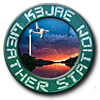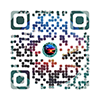SkyWarn |
The most important goal of the National Weather Service (NWS) is to protect lives and property through timely watches and warnings, and the
SkyWarn™ program is an essential part of achieving this goal.
 SkyWarn™ is a concept developed in the early 1970's that was intended to promote a
cooperative effort between the National Weather Service and communities. The emphasis of the effort is often focused on the storm spotter, an
individual who takes a position near their community and reports wind gusts, hail size, rainfall, and cloud formations that could signal a
developing tornado. Another part of SkyWarn™ is the receipt and effective distribution of
National Weather Service information.
SkyWarn™ is a concept developed in the early 1970's that was intended to promote a
cooperative effort between the National Weather Service and communities. The emphasis of the effort is often focused on the storm spotter, an
individual who takes a position near their community and reports wind gusts, hail size, rainfall, and cloud formations that could signal a
developing tornado. Another part of SkyWarn™ is the receipt and effective distribution of
National Weather Service information.
The organization of spotters and the distribution of warning information mainly lies with the National Weather Service or with an emergency management agency within the community. This agency could be a police or fire department, or often is an emergency management/service group (what people might still think of as civil defense groups). This varies across the country however, with local National Weather Service offices taking the lead in some locations, while emergency management takes the lead in other areas.
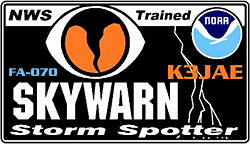 Other countries have similar programs, such as the Canadian spotting program
Canwarn, the Tornado and Storm Research Organisation (TORRO) program in the United Kingdom,
and Skywarn Europe for several European countries.
Other countries have similar programs, such as the Canadian spotting program
Canwarn, the Tornado and Storm Research Organisation (TORRO) program in the United Kingdom,
and Skywarn Europe for several European countries.
SkyWarn™ is not a club or organization, however, in some areas where Emergency Management programs do not perform the function, people have organized SkyWarn™ groups that work independent of a parent government agency and feed valuable information to the National Weather Service. While this provides the radar meteorologist with much needed input, the circuit is not complete if the information does not reach those who can activate sirens or local broadcast systems.
SkyWarn™ spotters are not by definition "Storm Chasers." While their functions and methods are similar, the spotter stays close to home and usually has ties to a local agency. Storm chasers often cover hundreds of miles a day. The term Storm Chaser covers a wide variety of people. Some are meteorologists doing specific research or are gathering basic information (like video) for training and comparison to radar data. Others chase storms to provide live information for the media, and others simply do it for the thrill.
Storm Spotting and Storm Chasing is dangerous and should not be done without proper training, experience and equipment.
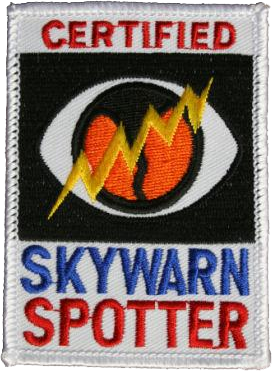 The National Weather
Service conducts spotter training classes across the United States, and your local National Weather Service office should be consulted as to when
the next class will be held.
The National Weather
Service conducts spotter training classes across the United States, and your local National Weather Service office should be consulted as to when
the next class will be held.
Since SkyWarn™ began in the 1970s, thousands of volunteers have helped the NWS issue more accurate and timely severe weather warnings by acting as spotters. The role of the spotter is to serve as the eyes and ears of the NWS during severe weather situations.
Most SkyWarn™ volunteers are involved with amateur (HAM) radio, because HAM radio operators are well-equipped to relay their reports of severe weather. However, the SkyWarn™ program also includes law enforcement agencies, emergency management personnel, public utilities workers, and even people who are simply interested in the weather.
Although the NWS office at Pittsburgh has obtained modernized equipment such as the WSR-88D Doppler radar to better detect severe weather, SkyWarn™ spotters continue to be essential to our warning process. Even with all the new technology, an accurate report from a SkyWarn™ spotter often provides critical information required by the forecasters to issue timely warnings, which can save lives.
Year after year, reports from SkyWarn™ observers have assisted the Pittsburgh NWS in issuing timely warnings based on REAL-TIME reports throughout their 36 County Warning Area covering parts of PA, WV, OH, and MD. The NWS's primary mission is to issue warnings to protect life and property.
The Weather Office and/or emergency management authorities may activate the Skywarn net usually whenever there is a threat severe weather or the forecast office issues a severe thunderstorm watch, tornado watch, or flood watch. In this case, information will be relayed through our amateur radio repeater.
The NWS staff at the Pittsburgh Forecast Office, are responsible for issuing warnings for most of Western Pennsylvania. Skywarn volunteers become the eyes and ears of the Pittsburgh NWS Skywarn Department helping to provide better weather watch and warning services to the public.
The ground truth reports from SkyWarn™ spotters are a vital link in using advanced radar data and meteorological skills to carry out the mission of the Pittsburgh Forecast Office. Their observations also provide us with information in compiling documentation of severe weather events and verification of warnings. These reports become part of the United States Storm Data publication, which is used by researchers and also provides climatological data on a wide variety of unusual weather phenomenom, including statistics on death, injuries, and property and crop damage.
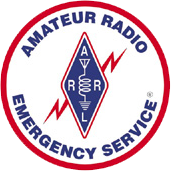 Over half of the Pittsburgh Forecast Office 1600+
spotters are also licensed amateur radio operators (a.k.a hams). The hams throughout many of our local counties meet and organize their spotter
efforts on one radio frequency (network or nets), when severe weather threatens.
Amateur Radio Emergency Services (ARES) provides communication support for the SkyWarn™
program.
Over half of the Pittsburgh Forecast Office 1600+
spotters are also licensed amateur radio operators (a.k.a hams). The hams throughout many of our local counties meet and organize their spotter
efforts on one radio frequency (network or nets), when severe weather threatens.
Amateur Radio Emergency Services (ARES) provides communication support for the SkyWarn™
program.
AMATEUR (HAM) Radio
A very important part of our SkyWarn™ network is the Amateur (HAM) Radio. HAM radio operators, or HAMs, are a valuable resource to the NWS because of their ability to communicate during times of severe weather when other communication media may fail. Many HAMs have radios in their cars, which allows them to "go mobile" and get to areas where severe weather is occurring.
At least one HAM is also stationed at the NWS office when severe weather is occurring. It is the duty of this HAM to act as a network controller by relaying information between HAMs in the field and NWS personnel. HAMs report their positions and eyewitness reports, while NWS personnel give information about storm locations and motions. This allows the net controller to instruct other HAMs where to go.
Area HAMs recently set up an Automatic Position Reporting System (APRS) at the NWS Pittsburgh office. APRS uses packet radio to relay data that can be displayed on a computer.
If you want to learn more about Amateur Radio, a good place to start is the Amateur Radio Relay League. Excellent resources for getting started in HAM radio can also be found at local HAM Radio clubs.
Any amateur radio or county government organization in the Memphis CWS that would like to receive SkyWarn™ spotter training should contact Gary Woodall, the NWS Warning Coordination Meteorologist in Memphis.
If you are a certified Skywarn Spotter, you can file your reports on the Pittsburgh (PBZ) website by clicking on the eSpotter logo at top of page or by clicking here. SkyWarn™ and the official SkyWarn™ logo are trademarks of the National Oceanographic and Atmospheric Administration, used with permission.
 SkyWarn™ is a concept developed in the early 1970's that was intended to promote a
cooperative effort between the National Weather Service and communities. The emphasis of the effort is often focused on the storm spotter, an
individual who takes a position near their community and reports wind gusts, hail size, rainfall, and cloud formations that could signal a
developing tornado. Another part of SkyWarn™ is the receipt and effective distribution of
National Weather Service information.
SkyWarn™ is a concept developed in the early 1970's that was intended to promote a
cooperative effort between the National Weather Service and communities. The emphasis of the effort is often focused on the storm spotter, an
individual who takes a position near their community and reports wind gusts, hail size, rainfall, and cloud formations that could signal a
developing tornado. Another part of SkyWarn™ is the receipt and effective distribution of
National Weather Service information.The organization of spotters and the distribution of warning information mainly lies with the National Weather Service or with an emergency management agency within the community. This agency could be a police or fire department, or often is an emergency management/service group (what people might still think of as civil defense groups). This varies across the country however, with local National Weather Service offices taking the lead in some locations, while emergency management takes the lead in other areas.
 Other countries have similar programs, such as the Canadian spotting program
Canwarn, the Tornado and Storm Research Organisation (TORRO) program in the United Kingdom,
and Skywarn Europe for several European countries.
Other countries have similar programs, such as the Canadian spotting program
Canwarn, the Tornado and Storm Research Organisation (TORRO) program in the United Kingdom,
and Skywarn Europe for several European countries.SkyWarn™ is not a club or organization, however, in some areas where Emergency Management programs do not perform the function, people have organized SkyWarn™ groups that work independent of a parent government agency and feed valuable information to the National Weather Service. While this provides the radar meteorologist with much needed input, the circuit is not complete if the information does not reach those who can activate sirens or local broadcast systems.
SkyWarn™ spotters are not by definition "Storm Chasers." While their functions and methods are similar, the spotter stays close to home and usually has ties to a local agency. Storm chasers often cover hundreds of miles a day. The term Storm Chaser covers a wide variety of people. Some are meteorologists doing specific research or are gathering basic information (like video) for training and comparison to radar data. Others chase storms to provide live information for the media, and others simply do it for the thrill.
Storm Spotting and Storm Chasing is dangerous and should not be done without proper training, experience and equipment.
 The National Weather
Service conducts spotter training classes across the United States, and your local National Weather Service office should be consulted as to when
the next class will be held.
The National Weather
Service conducts spotter training classes across the United States, and your local National Weather Service office should be consulted as to when
the next class will be held.Since SkyWarn™ began in the 1970s, thousands of volunteers have helped the NWS issue more accurate and timely severe weather warnings by acting as spotters. The role of the spotter is to serve as the eyes and ears of the NWS during severe weather situations.
Most SkyWarn™ volunteers are involved with amateur (HAM) radio, because HAM radio operators are well-equipped to relay their reports of severe weather. However, the SkyWarn™ program also includes law enforcement agencies, emergency management personnel, public utilities workers, and even people who are simply interested in the weather.
Although the NWS office at Pittsburgh has obtained modernized equipment such as the WSR-88D Doppler radar to better detect severe weather, SkyWarn™ spotters continue to be essential to our warning process. Even with all the new technology, an accurate report from a SkyWarn™ spotter often provides critical information required by the forecasters to issue timely warnings, which can save lives.
Year after year, reports from SkyWarn™ observers have assisted the Pittsburgh NWS in issuing timely warnings based on REAL-TIME reports throughout their 36 County Warning Area covering parts of PA, WV, OH, and MD. The NWS's primary mission is to issue warnings to protect life and property.
The Weather Office and/or emergency management authorities may activate the Skywarn net usually whenever there is a threat severe weather or the forecast office issues a severe thunderstorm watch, tornado watch, or flood watch. In this case, information will be relayed through our amateur radio repeater.
The NWS staff at the Pittsburgh Forecast Office, are responsible for issuing warnings for most of Western Pennsylvania. Skywarn volunteers become the eyes and ears of the Pittsburgh NWS Skywarn Department helping to provide better weather watch and warning services to the public.
The ground truth reports from SkyWarn™ spotters are a vital link in using advanced radar data and meteorological skills to carry out the mission of the Pittsburgh Forecast Office. Their observations also provide us with information in compiling documentation of severe weather events and verification of warnings. These reports become part of the United States Storm Data publication, which is used by researchers and also provides climatological data on a wide variety of unusual weather phenomenom, including statistics on death, injuries, and property and crop damage.
 Over half of the Pittsburgh Forecast Office 1600+
spotters are also licensed amateur radio operators (a.k.a hams). The hams throughout many of our local counties meet and organize their spotter
efforts on one radio frequency (network or nets), when severe weather threatens.
Amateur Radio Emergency Services (ARES) provides communication support for the SkyWarn™
program.
Over half of the Pittsburgh Forecast Office 1600+
spotters are also licensed amateur radio operators (a.k.a hams). The hams throughout many of our local counties meet and organize their spotter
efforts on one radio frequency (network or nets), when severe weather threatens.
Amateur Radio Emergency Services (ARES) provides communication support for the SkyWarn™
program.AMATEUR (HAM) Radio
A very important part of our SkyWarn™ network is the Amateur (HAM) Radio. HAM radio operators, or HAMs, are a valuable resource to the NWS because of their ability to communicate during times of severe weather when other communication media may fail. Many HAMs have radios in their cars, which allows them to "go mobile" and get to areas where severe weather is occurring.
At least one HAM is also stationed at the NWS office when severe weather is occurring. It is the duty of this HAM to act as a network controller by relaying information between HAMs in the field and NWS personnel. HAMs report their positions and eyewitness reports, while NWS personnel give information about storm locations and motions. This allows the net controller to instruct other HAMs where to go.
Area HAMs recently set up an Automatic Position Reporting System (APRS) at the NWS Pittsburgh office. APRS uses packet radio to relay data that can be displayed on a computer.
If you want to learn more about Amateur Radio, a good place to start is the Amateur Radio Relay League. Excellent resources for getting started in HAM radio can also be found at local HAM Radio clubs.
Any amateur radio or county government organization in the Memphis CWS that would like to receive SkyWarn™ spotter training should contact Gary Woodall, the NWS Warning Coordination Meteorologist in Memphis.
If you are a certified Skywarn Spotter, you can file your reports on the Pittsburgh (PBZ) website by clicking on the eSpotter logo at top of page or by clicking here. SkyWarn™ and the official SkyWarn™ logo are trademarks of the National Oceanographic and Atmospheric Administration, used with permission.

